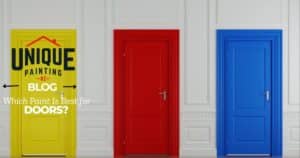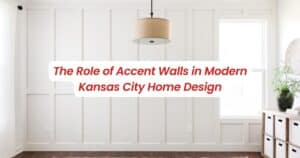Did you know that when a perfectly designed interior space is created, some rules have to be considered? Or did you think that the ridiculously creative person that put that space together just “has it”, and they threw that room together with their mad skills? Well, to be fair, mad skills do play a huge part, but a good interior designer will consciously use these 7 elements of design in every space they create. Let’s explore.
7 Interior Design Elements
- Space
- Lines
- Form or Shape
- Pattern
- Light
- Color
- Texture
Space
Space is basically a room, including the walls, floor, ceiling, the foundation. Within a room there can be positive and negative space. Positive space contains furniture, curtains, rugs, and negative space is a blank area, unfurnished. Both are important. You don’t want to over-do it with too much furniture or accessories and under-do it with not enough. Space is obviously the first thing I look at during a consult. I survey the room, noticing the walls and all the starts and stops, trim, ceiling, and of course, the items contained in the space.
Line
Line should be noticed in each and every room. Placing your furniture, artwork, and rugs along the same line as beams and windows is a great way to accentuate the existing lines. Diagonal lines bother our eyes, especially when they run against the furniture placement in a room. Noticing the height in a room is part of Line as well. Tall pieces of furniture add the illusion of height, as well as hanging curtains close to the ceiling. The color and sheen used to paint a ceiling can also offer height, but can also pull a space close, so you have to be careful.
Form or Shape
Forms or Shape are non-linear shapes in the space and understanding how to use those forms to bring harmony and balance to a room is important. Sometimes using a specific paint color can accentuate a shape or move the eye away from it. When I think of Form or Shape my thoughts always go to the open area on either side of a fireplace, because there usually always is. It would seem awkward to not have items flanking either side. Whether it be with bookcases, a pair of small chests, chairs, or even wall shelves. The shape or form created on either side of that fireplace needs some love.
Pattern
Patterns are basically various shapes, lines, and forms put together in repetition. Using and mixing patterns can make a space unique and create uniformity. Repetitive design in fabrics, wallpaper, rugs, and tile, add dimension and can offer endless options. Mixing patterns is one of my favorite things to formulate for a space. I’m always up for a good challenge and putting patterns and color together is just that because of all of the options available. To me, pattern (and color) brings the interest and personality to a room.
Light
Light is so very important in any room. It highlights all of the other design elements. It sets the tone for the entire room and everything contained within the space. Does the light mostly come from natural light or artificial light? Analyzing light sources and mapping out where the light is and is not helps create a plan for the possible addition of ambient, task, or accent lighting. It also helps create a plan for the space, furniture wise.
Color
I’m just going to say it, color is the most important contribution to a home (I might be a bit partial though). Lighting is, of course, going to make the colors advance or retreat, but the color itself has to be solid. And just as light can make colors advance and retreat, color can have the same effect in a room. Using darker colors on walls can close a room in (though I’m not completely opposed to using dark colors in small spaces as sometimes a dark color on the walls and ceiling can actually make a room feel infinite). Using lighter colors on the walls can make a space feel larger and brighter. Special attention also needs to be made to how you want to feel in a space. That feeling can be achieved through color. It can be difficult, I know, to find the perfect color out of all the choices in the land, which is why I do what I do. Samples can be your BFF if you’re going it alone and having a hard time making a decision.
Texture
Texture is essential in creating harmony in a space. You can achieve texture in materials like glass, metal, wood, paper, cotton, silk, concrete, wool, leather, felt, fur, marble or granite to name a few. A textured item is not just how the item looks, how the item feels is also something that needs to be considered. Texture can also be achieved visually through a variety of wall papers, and creative painting techniques. I feel that texture is important and pay special attention to its use because without texture a room can feel cold. Adding texture can warm up a space instantly.
Without these 7 Interior Design Elements, the function of a space will not be satisfied. It takes a fundamental knowledge of these Elements, but also the knowledge and experience of how to use the Elements in a space to make a room feel harmonious and create functionality. I happen to know a girl who has some mad skills and can help you achieve the harmony and functionality you deserve. Eliminating even one of these elements can make your space feel off. If you’re feeling like there’s something missing, give me a shout. 816-500-7759















